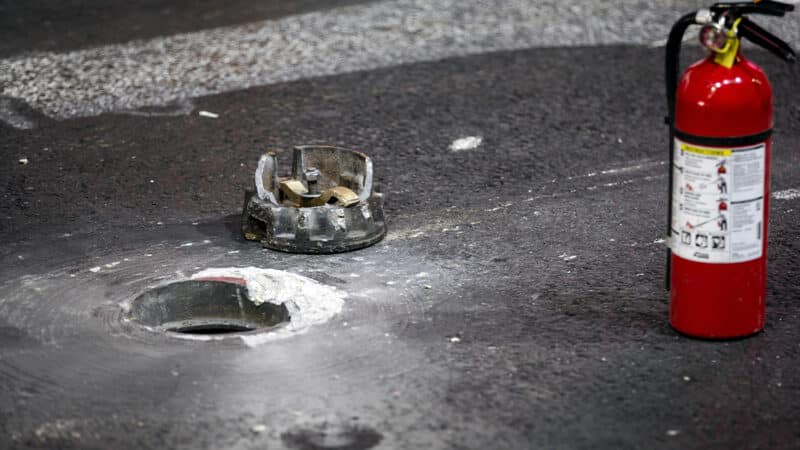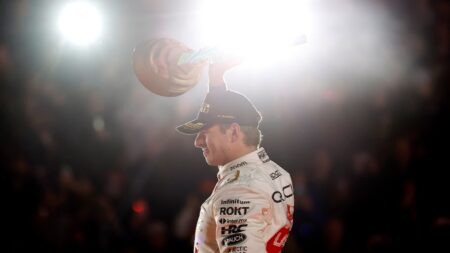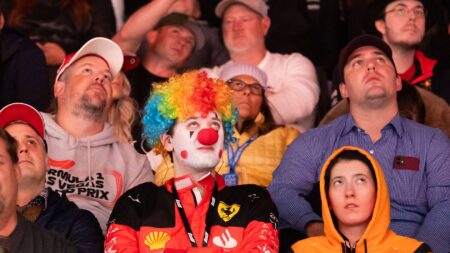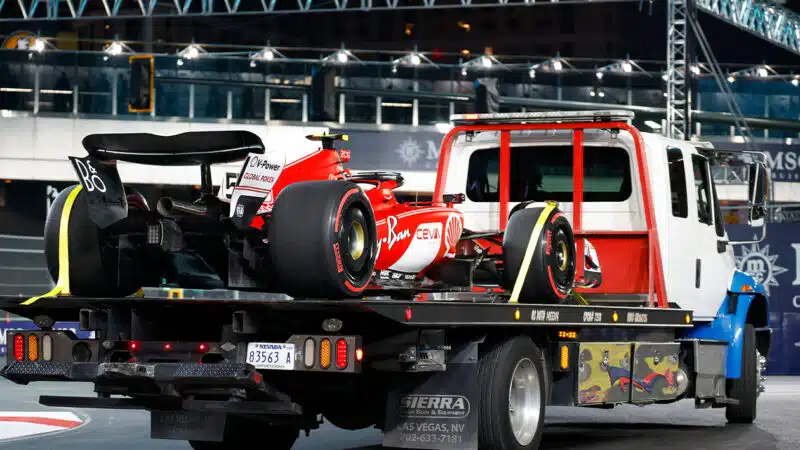For some spectators, the nine minutes was all they ever saw of the cars on circuit. As remedial work, which delayed any further running, came to an end, hospitality staff, security and bus drivers were coming to the end of their shifts — some forced to stop because of restrictions on driving hours.
That meant fans had to go too, despite waiting for hours. Messages over the tannoy system ordered them out at around 1.30am, which is when they would have been leaving had the second session started at midnight as planned. Security and police marched in to eject anyone who had remained in the hope of seeing what they had paid for.
An extended practice session began an hour later. While cars raced down the Strip in front of empty grandstands, outside the circuit anger raged, including from people who only had tickets for the first day.
“We have worked to adjust our staffing plans in the event of an extended race schedule”
F1 could have apologised but it didn’t. Just as the FIA did after the Abu Dhabi controversy in 2021, so F1 inferred that the complaining fans were ignorant.
A statement signed off by Renee Wilm, CEO of the company created to run the Las Vegas race and Stefano Domenicali, F1’s CEO, began by listing how responsibility for a grand prix “falls with Formula 1 as the commercial rights holder of the sport, the FIA as the regulatory body, and the local promoter, in this case the Las Vegas Grand Prix.”
Then came the patronising sentence: “This is important for those who are new to racing to understand.”
Why it’s so crucial to understand the organisational structure of a motor race before you’re brazen enough to cast your eyes on the circuit was never explained at all.

Can’t put your finger in the FIA’s precise role in the Las Vegas GP’s organisation? “This is important for new fans to understand,” says F1
Chris Graythen/Getty Images
Then, in a spectacular about-turn, Wilm and Domenicali admitted that they themselves had not done their homework and considered the possibility that any of the sessions might overrun.
“We have worked overnight to adjust our staffing plans across security, transportation and hospitality to ensure that we can function and serve fans with the best possible experience in the event of an extended race schedule,” read the statement, appearing to confirm that there had been no previous plan for any significant delay.
It’s not as if this was a far-fetched scenario. Quite apart from the likelihood of teething troubles at a brand new venue, interruptions are a feature of F1. Only two weeks before, qualifying for the Sao Paulo Grand Prix started late.
“How can you even dare trying to talk bad about an event that sets the new standards”
The patronising tone continued: “We have all been to events, like concerts, games and even other Formula 1 races, that have been cancelled because of factors like weather or technical issues,” the statement said, ignoring the fact that concert organisers don’t send the crowd home, play the set anyway and trouser the cash.
A $200 credit in the Las Vegas Grand Prix shop was offered — to spectators with a single-day pass — and it wasn’t long until attendees were posting price tags to illustrate how little that bought.
“If I was a fan, I would tear the whole place down,” said Max Verstappen. A class action lawsuit has already been filed on behalf of some attendees, claiming further compensation.





